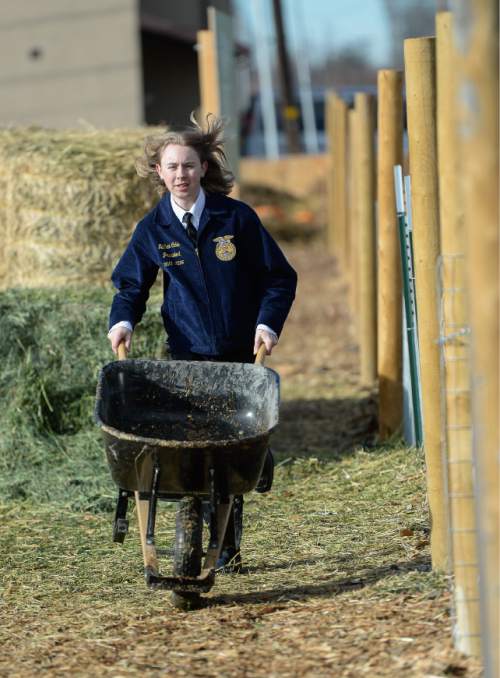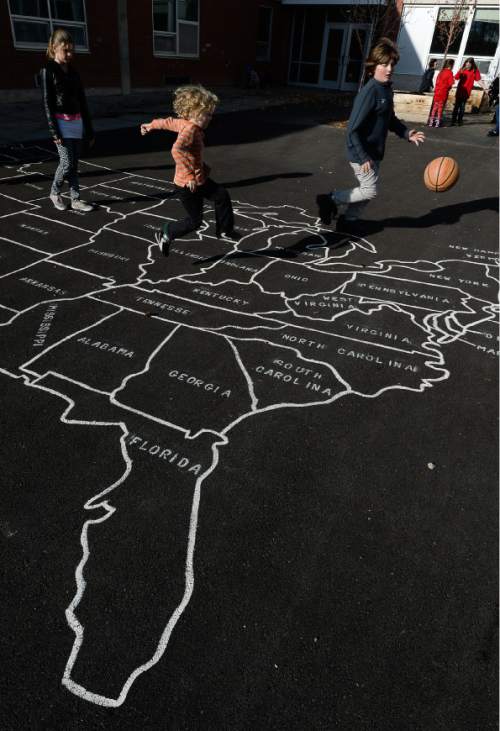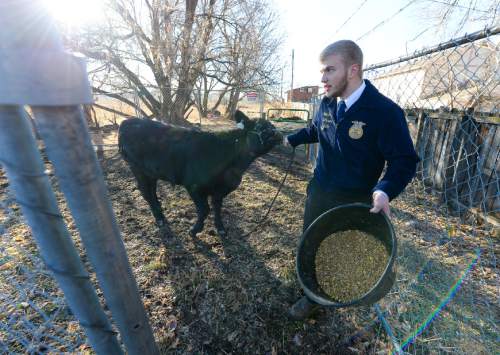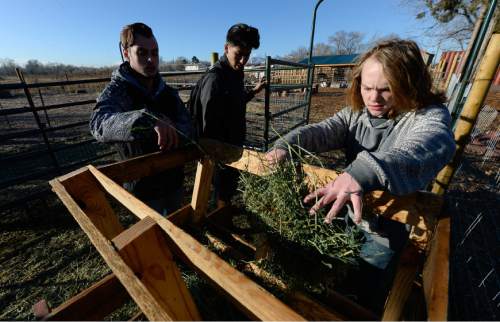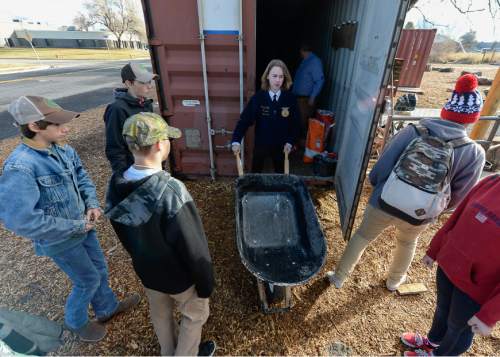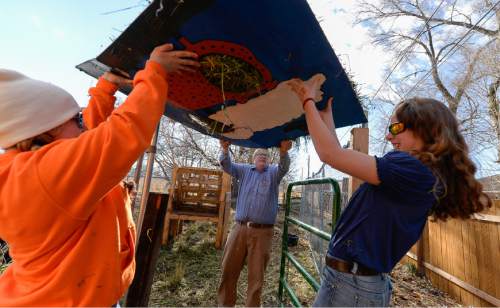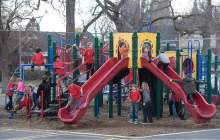This is an archived article that was published on sltrib.com in 2015, and information in the article may be outdated. It is provided only for personal research purposes and may not be reprinted.
Since June, lawmakers and education leaders have met to review and debate the way Utah pays for its public charter schools.
That work ended in November, with the task force creating a bill that would give charter funding a $16 million bump by dictating that school districts share more of their revenue with the alternate schools.
"With passage of this bill," said state Sen. Howard Stephenson, R-Draper, "I think it will be fair to say that Utah charter schools students are funded more equitably, relative to their district counterparts, than any state in the nation."
But skeptics argue that under the bill, charter schools would actually make out better than school districts — and at their expense.
The bill would change the complex formula known as local replacement, which functions as a stand-in for the property tax that districts, but not charters, have the power to impose on homeowners.
And a tweak the bill would make to accounting practices might mean that as much as $40 million more would flow from state coffers to charter schools — a significant figure in Utah, where public schools receive the least per-pupil state funding in the country.
The $16 million figure used during the task force debate is based on current state law, which uses district finance reports from two years ago to set today's charter funding levels.
It allows for precise calculations, but leads to funding that fluctuates because of 2-year-old events, according to Ben Leischman, a legislative fiscal analyst.
The task force bill would change that accounting method and would use revenue projections to calculate funding levels. That shift that would capture two years of revenue growth during implementation of the bill, Leischman said, lifting the $16 million funding to something in the ballpark of $30 million to $40 million.
Because of the bill's "moving parts," Leischman said, "the task force probably didn't see the whole picture because we can't estimate that yet."
Salt Lake City Democratic Rep. Joel Briscoe put a finer point on it.
"If the purpose of the committee was to find more ways to put money into charters," Briscoe said, "they were successful."
—
Separate or equal? • Charter schools, which are public but operate independently of Utah's 41 school districts, enroll one out of every 10 public school students in the state.
A student who attends charter schools from kindergarten through high school receives $535 more in cumulative per-pupil state funding compared with a student in traditional schools, according to a recent report by the Governor's Office of Management and Budget.
But there's no simple answer to whether school districts receive more or less funding than their charter counterparts. Public schools are funded through a combination of state and local funding. Property tax revenue collected by school districts varies throughout Utah. And the amount of money a charter receives from local replacement is based on statewide revenue averages.
Briscoe, a former teacher, said that when the charter movement began roughly 20 years ago, there was a sentiment that the alternate schools would be able to perform with less funding through innovative services and regulatory flexibility.
Utah charters have failed at that attempt, he said, and in recent years have pushed for funding levels equal or above those of the state's district schools.
"In some ways, for me, the charter school experiment in that sense is dead," Briscoe said.
Traditional schools have expenses for services, like elective courses, busing, and extracurricular activities, that most charters are neither expected nor have the capacity to provide.
But under the task force bill, school districts would be required to share a portion of the money they spend on community recreation with charter schools in their boundaries.
Originally, the bill also proposed that districts share the money they spend on busing. That language was ultimately stricken, but the idea is likely to come up again.
"I don't know that all of the questions are by any means settled," said Royce Van Tassell, executive director of the Utah Association of Public Charter Schools. "They were only able to recommend further study on transportation."
He said charter schools are "thrilled" with the task force recommendations, which, if enacted, would bring the state closer to achieving funding parity.
It's a fallacy to expect charter to operate with less funding, Van Tassell said, since the law holds the alternate schools to most of the same standards as traditional districts.
"What was said and done and promised a decade ago isn't necessarily what [the] Legislature or succeeding lawmakers have said and done and promised," he said.
—
Representation without taxation • According to Van Tassell, charters will always be more innovative than school districts and save taxpayers money by housing students that would otherwise require new buildings, teachers and supplies in the traditional system.
But Cade Douglass, superintendent of the Sevier County School District, said the idea that charter schools save money applies only in high-growth areas of the state.
In his school district, he said, a new charter has drawn a few students from the traditional schools, but not enough to close a building or reduce staff.
And when the school board launches a campaign to raise property taxes or a bond for new buildings and services, he said, a portion of that new revenue is diverted to charter leaders who are not elected by the public.
"It's frustrating that we did all that work to educate and inform voters on what we would do with the money and then have it go somewhere else," he said.
Briscoe said no Utah student, charter or traditional, is adequately funded.
But expanding what traditional districts must share with charters, he said, shifts revenue to the alternative schools without asking them to answer to voters and taxpayers.
"I think they're somewhat drafting on the hard work done by local school boards and superintendents to go out and ask their voters to increase their local taxes," Briscoe said.
District administrators have argued for years that the money they send to charters should be listed on residents' property tax notices.
The task force voted against such a proposal in its final meeting.
Hurricane Republican Rep. Brad Last said he was surprised that the task force voted against adopting the property-tax issue as a committee bill.
"My feeling is it ought to be on the tax notice," he said. "I'm quite sure that during the session it will come up as an individual bill."
Stephenson, who works as president of the Utah Taxpayers Association, said the proposal wasn't "ready for primetime."
The draft language was unclear, he said, on how charter funding would be formatted on tax notices and exactly what information and data would be included.
"I think if we had one more meeting we could have worked out a solution," Stephenson said. "I want to make sure we do get it done, but we need to get it done right."
Before joining the charter school association, Van Tassell was Stephenson's vice president at the Utah Taxpayers Association.
He said charters support transparency, and expect to be accountable for their funding. But they do not have taxing authority, and to include them on a tax notice, he said, could give the impression that it is charter schools, and not school districts, collecting revenue from homeowners.
"It is difficult to see how a property tax notice will necessarily provide more light as opposed to more confusion," he said.
Briscoe favors showing Utahns exactly where their tax dollars are going, and said the argument that taxpayers will be confused by the inclusion of charter funding on notices is a "rearguard action" to prevent transparency.
"The more information you give voters and the public and the taxpayers," Briscoe said, "I think the better off we all are."
And though school districts do have taxing authority, they have no control over the number of charters that open within their boundaries, or the amount of funding they're required to share with them under local replacement.
—
Picking up the bill • The task force also recommended that charter enrollment be based on average attendance, as with school districts, instead of an October headcount that is unique to the alternate schools.
That change would cost charters roughly $7.5 million, but they would more than make up that loss through the additions and changes to local replacement.
Stephenson said the bill language treats charters fairly, rather than continuing to ask them to "add more water to the soup" until revenues catch up with enrollment growth.
But without a clear price tag, he said, it's hard to know whether all the members of the task force understood the fiscal impact of their recommendation.
"I think, generally, the committee understood the principle behind having this year's budget reflect this year's students," he said.
A $40 million hit to the state budget is enough to give Last pause, but he said any change in accounting methods has an initial impact but evens out over time.
"You have that one-time hit and then, going forward, you have a fairer process."
Last said he expects the recommendations of the Charter Funding Task Force, which included high-ranking lawmakers, to carry weight when the Legislature convenes next month.
But whether the task force bill will pass, and what other charter school proposals will be brought forward, is difficult to predict, he added.
"Who knows what's going to happen in January?" Last said. "You've got 104 extroverts trying to change the world."


